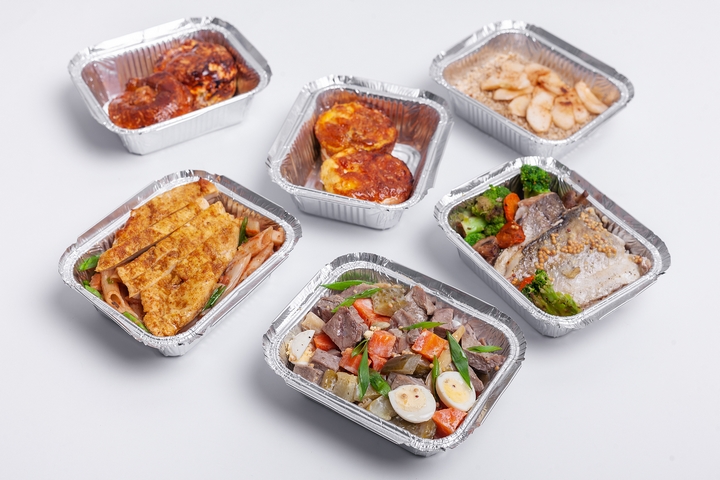
Food packaging is an integral part of the modern food industry, ensuring that products reach consumers in pristine condition, with safety, convenience, and aesthetics as primary considerations. In this article, we’ll explore the world of food packaging and delve into the innovative use of stand-up pouches in packaging various food products.
The Significance of Food Packaging
Food packaging serves multiple purposes beyond mere containment. It is a complex interplay of form and function, fulfilling essential roles:
- Protection: Packaging acts as a protective shield, safeguarding food from physical damage, microbial contamination, and exposure to environmental factors like moisture, light, and oxygen.
- Preservation: Proper packaging extends the shelf life of food by minimizing spoilage and maintaining freshness, taste, and nutritional value.
- Convenience: Packaging enhances the convenience of handling and consuming food. It includes features such as resealability, portion control, and microwave-safe materials.
- Branding and Marketing: Packaging is a powerful marketing tool, featuring product information, branding elements, and design that can influence consumer choices and foster brand loyalty.
- Sustainability: As environmental concerns grow, sustainable packaging practices are gaining traction. Modern packaging solutions aim to reduce waste, minimize environmental impact, and promote recycling.
Amidst these multifaceted requirements, stand-up pouches have emerged as a versatile and eco-friendly packaging solution with widespread applications in the food industry.
The Rise of Stand-Up Pouches
Stand-up pouches, or SUPs, have become increasingly popular in recent years due to their adaptability and consumer-friendly features. These pouches have revolutionized food packaging by providing numerous advantages:
- Space Efficiency: The design of stand-up pouches maximizes space utilization, both during storage and on store shelves. Their compact form takes up less space than traditional rigid packaging, reducing shipping costs and storage requirements.
- Consumer Appeal: Stand-up pouches are visually appealing and can be custom-designed to showcase product graphics and branding. The upright design stands out on store shelves, attracting consumer attention.
- Seal Integrity: These pouches feature robust sealing mechanisms, ensuring product freshness and preventing leaks or contamination. Zip-lock closures or resealable options enhance user convenience.
- Barrier Properties: Stand-up pouches can be constructed with various barrier materials to protect the contents from oxygen, moisture, light, and external odors, extending the shelf life of food products.
- Lightweight: SUPs are lighter than traditional packaging materials, reducing transportation costs and carbon emissions. Their reduced weight is especially advantageous for e-commerce and international shipping.
- Versatility: Stand-up pouches are suitable for a wide range of food products, including snacks, cereals, pet food, sauces, soups, and more. They are available in various sizes and shapes to accommodate diverse product types.
Stand-Up Pouches in Action
The versatility of stand-up pouches makes them ideal for packaging a wide array of food products. Let’s explore some specific examples of how SUPs are being used in the food industry:
1. Snacks and Dry Goods:**
Stand-up pouches are particularly well-suited for packaging snacks and dry goods. From potato chips and nuts to granola and pasta, these pouches preserve product freshness, provide easy access, and feature appealing designs that lure consumers.
2. Baby Food:
The convenience and resealability of stand-up pouches make them a popular choice for packaging baby food. These pouches are easy for parents to use, and their aseptic packaging technology ensures product safety without the need for preservatives.
3. Sauces and Condiments:
Sauces, condiments, and gravies benefit from stand-up pouch packaging, which offers precise portion control and easy dispensing. The barrier properties of SUPs protect these products from spoilage.
4. Liquid and Semi-Liquid Products:
Stand-up pouches are versatile enough to handle liquid and semi-liquid products like fruit juices, yogurts, and soups. Their robust seals prevent leaks, ensuring mess-free consumption.
5. Pet Food:
Pet food manufacturers have also embraced stand-up pouches for their convenience and protection. These pouches can be used for dry kibble, treats, or wet food, and they often feature resealable closures to maintain freshness.
6. Ready-to-Eat Meals:
As busy lifestyles drive demand for convenient meal solutions, stand-up pouches have found their way into the ready-to-eat meal market. These pouches are used for everything from prepackaged salads to microwaveable dinners.
Sustainability and Stand-Up Pouches
One of the most significant trends in the food packaging industry is the drive towards sustainability. Stand-up pouches have responded to this call for eco-friendly solutions in several ways:
- Reduced Material Usage: Stand-up pouches use less material than traditional rigid packaging, reducing waste and environmental impact.
- Recyclable Materials: Manufacturers are increasingly using recyclable materials to produce SUPs, making it easier for consumers to dispose of them responsibly.
- Lightweight Design: The lightweight nature of stand-up pouches contributes to lower transportation emissions, as less energy is required to ship them.
- Extended Shelf Life: By preserving food and minimizing food waste, stand-up pouches indirectly contribute to sustainability by reducing the resources needed to produce replacement products.
- Innovative Materials: Some SUPs are now being produced using innovative materials like bio-plastics, compostable films, and post-consumer recycled content, further reducing their environmental footprint.
The world of food packaging is continually evolving, and stand-up pouches have emerged as a standout solution that combines aesthetics, functionality, and sustainability. Their versatility spans various food product categories, from snacks and sauces to baby food and ready-to-eat meals. By offering an appealing package that preserves product freshness, minimizes waste, and reduces environmental impact, stand-up pouches have firmly established themselves as a staple in the modern food industry.
As consumers increasingly prioritize convenience, eco-friendliness, and product freshness, the role of stand-up pouches in food packaging is likely to continue expanding. These pouches represent a compelling case study in how innovation and adaptability in packaging can transform the way we store, transport, and consume our favorite foods while aligning with our sustainability goals.